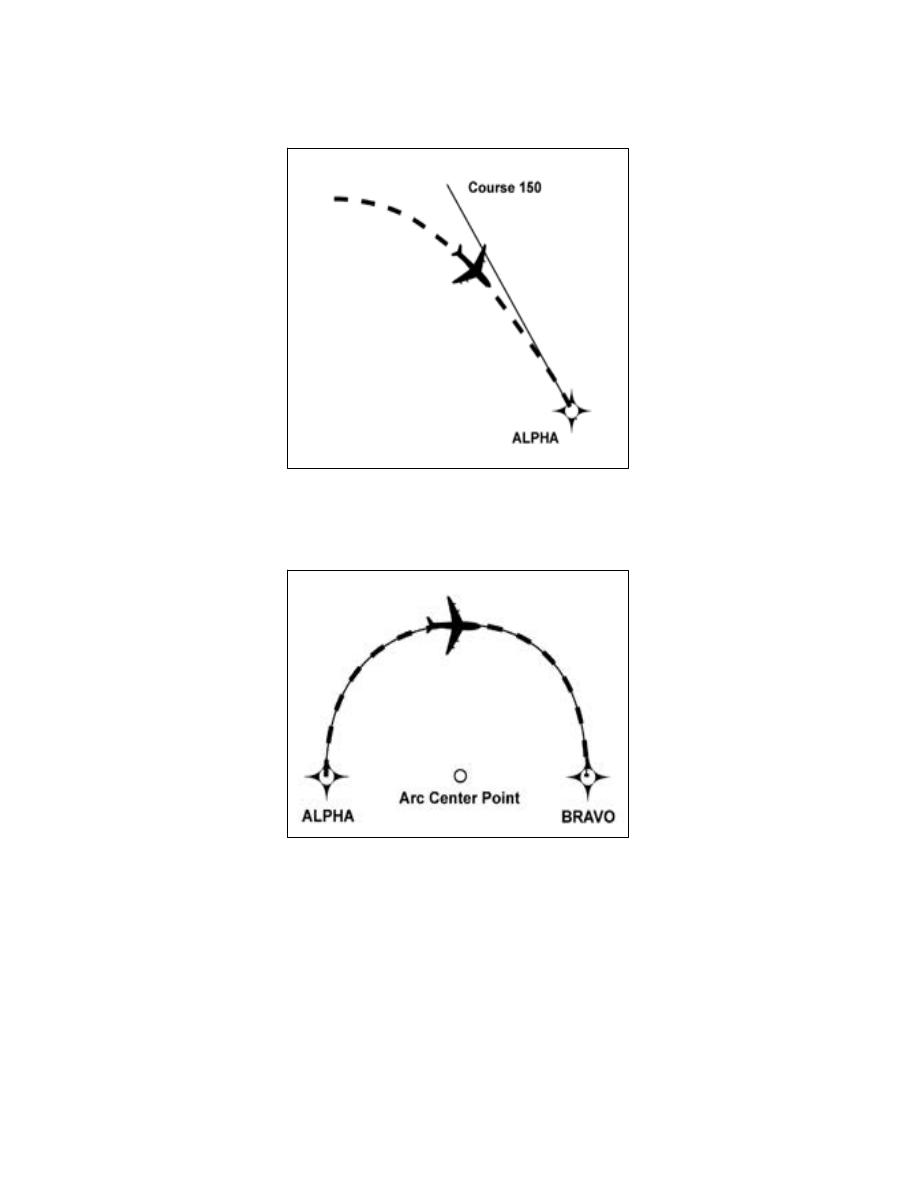
AIM
4/20/23
CAUTION
−
False glide slope signals may exist in the area of the localizer back course approach which can cause the glide slope flag
alarm to disappear and present unreliable glide slope information. Disregard all glide slope signal indications when
making a localizer back course approach unless a glide slope is specified on the approach and landing chart.
2.
The glide slope transmitter is located between 750 feet and 1,250 feet from the approach end of the
runway (down the runway) and offset 250 to 650 feet from the runway centerline. It transmits a glide path beam
1.4 degrees wide (vertically). The signal provides descent information for navigation down to the lowest
authorized decision height (DH) specified in the approved ILS approach procedure. The glidepath may not be
suitable for navigation below the lowest authorized DH and any reference to glidepath indications below that
height must be supplemented by visual reference to the runway environment. Glidepaths with no published DH
are usable to runway threshold.
3.
The glide path projection angle is normally adjusted to 3 degrees above horizontal so that it intersects
the MM at about 200 feet and the OM at about 1,400 feet above the runway elevation. The glide slope is normally
usable to the distance of 10 NM. However, at some locations, the glide slope has been certified for an extended
service volume which exceeds 10 NM.
4.
Pilots must be alert when approaching the glidepath interception. False courses and reverse sensing will
occur at angles considerably greater than the published path.
5.
Make every effort to remain on the indicated glide path.
CAUTION
−
Avoid flying below the glide path to assure obstacle/terrain clearance is maintained.
6.
The published glide slope threshold crossing height (TCH) DOES NOT represent the height of the actual
glide path on
−
course indication above the runway threshold. It is used as a reference for planning purposes which
represents the height above the runway threshold that an aircraft’s glide slope antenna should be, if that aircraft
remains on a trajectory formed by the four
−
mile
−
to
−
middle marker glidepath segment.
7.
Pilots must be aware of the vertical height between the aircraft’s glide slope antenna and the main gear
in the landing configuration and, at the DH, plan to adjust the descent angle accordingly if the published TCH
indicates the wheel crossing height over the runway threshold may not be satisfactory. Tests indicate a
comfortable wheel crossing height is approximately 20 to 30 feet, depending on the type of aircraft.
NOTE
−
The TCH for a runway is established based on several factors including the largest aircraft category that normally uses the
runway, how airport layout affects the glide slope antenna placement, and terrain. A higher than optimum TCH, with the
same glide path angle, may cause the aircraft to touch down further from the threshold if the trajectory of the approach is
maintained until the flare. Pilots should consider the effect of a high TCH on the runway available for stopping the aircraft.
e. Distance Measuring Equipment (DME)
1.
When installed with the ILS and specified in the approach procedure, DME may be used:
(a)
In lieu of the OM;
(b)
As a back course (BC) final approach fix (FAF); and
(c)
To establish other fixes on the localizer course.
2.
In some cases, DME from a separate facility may be used within Terminal Instrument Procedures
(TERPS) limitations:
(a)
To provide ARC initial approach segments;
(b)
As a FAF for BC approaches; and
(c)
As a substitute for the OM.
f. Marker Beacon
1
−
1
−
14
Navigation Aids